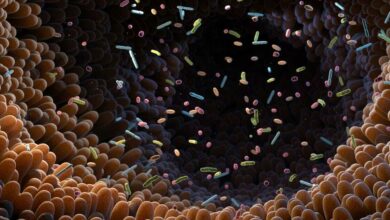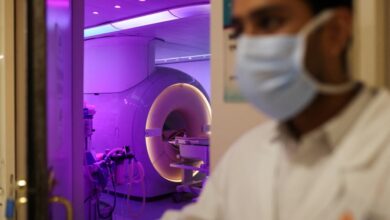Lipid buildup in tissues can trigger age-related diseases

Some changes in the body are inevitable as people get older. However, researchers are still trying to fully understand all the changes that happen and what they mean for the health of aging adults.
A new study found that a certain lipid (fat) starts to build up in muscle tissue with age and may trigger age-related diseases. The good news is that this lipid buildup can be reduced through daily exercise.
Researchers from several scientific research organizations in The Netherlands, led by researchers at Amsterdam University Medical College, who were behind the new study, noted that studying complex lipids may help with our understanding of age-related disease and overall longevity.
The researchers first identified the lipid using mouse tissues and then found similar results in human muscles. They then found that levels of this lipid could be reduced via exercise among postmenopausal women. The results point to another possible benefit of exercise and the need for more research regarding this lipid buildup.
For their study the researchers first examined ten different tissues in young and old mice to understand age-related differences in lipids. They found that more lipids began accumulating with age in most of the tissues they examined. The primary lipids they found were called Bis(monoacylglycero)phosphate (BMP) — and is believed to play a role in glycosphingolipid degradation and cholesterol transport.
Next, researchers wanted to see if a similar BMP accumulation occurred in humans. They collected muscle biopsies from younger men and women between twenty and thirty years old and older men and women between sixty-five and eighty. While there were differences between the muscle tissue samples of men and women, researchers did find a buildup of BMPs in older participants.
The lipid BMP, which the researchers found to accumulate with age, has in previous studies been shown to be a marker of disease or stress. Earlier research has implicated BMP accumulation in tissues with various diseases, including chronic kidney disease, diseases related to cholesterol accumulation and vascular diseases, and certain genetic metabolic disorders. It may turn out that BMP levels will serve as a reference marker for healthy aging but more work is required for this, said the researchers.
The researchers then explored whether exercise could influence BMP levels. For this portion of the study, researchers included 12 postmenopausal women between the ages of 45 and 70. These women were overweight and were doing less than three hours of exercise each week.
They conducted a randomized, cross-over intervention utilizing three different activity regimens: a sitting regimen, which involved sitting for fourteen hours a day, an exercising regimen, which involved exercising for one hour each day, and a standing regimen, which involved standing for three hours each day and walking for two hours each day. The participants did each regimen for four days and had a muscle biopsy taken on the fifth day. The researchers found that even over the short intervention period, levels of BMP were lower following exercise intervention.
The researchers said that their next steps are to better understand why the accumulation of BMP occurs in the first place (is it due to more production of BMP, or that BMP can not be broken down?). They also aim to better understand if BMP buildup is a harmful change happening with age (causing disease) or a beneficial one (a protective response by the body in response to other age-related damages.
In a report on their observation of the study the researchers pointed to some of the limitations of their study. In the first place, they only used male mice — there are differences in lipid metabolism between male and female mice. They also only used a small number of people for their biopsy collection and only looked at one tissue type, so future research could include even more information in this area.
Additionally, the exercise intervention only included women, so future research, including mixed groups, could be helpful. Moreover, exercise interventions also only lasted a short time, so it could not look at the long-term effects of exercise on BMP levels. The researchers also acknowledged that all lipids may increase in the body with age, but they suspect that BMP increases much more than other lipids.
Finally, researchers had limited data on the use of lipid-lowering medication, so future research could see how the use of these medications influences BMP levels.
The researchers further noted that more research is required to understand the increase of BMPs with age and whether this is helpful or harmful to the body.
Medical specialists reviewing the results of the study point to another potential reason for older adults to exercise regularly if possible. While it was still too early to make assumptions about the long-term effects of these lipids, the study brings forth an interesting finding regarding accumulation of certain lipids that occurs with aging, how this accumulation impacts the aging process, and how it can be reversed through exercises . No matter what the long-term impacts on lipids in tissues are, the study further underscores the importance of encouraging regular physical activity, especially as we age. Regular exercise maintains strong muscle which preserves mobility, improves cognitive function and sleep, and even has a positive impact on energy and mood.












